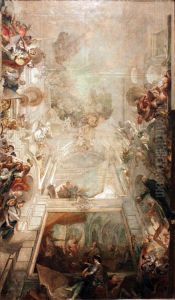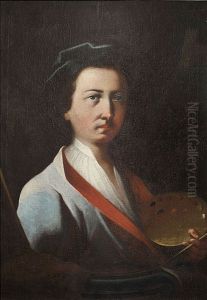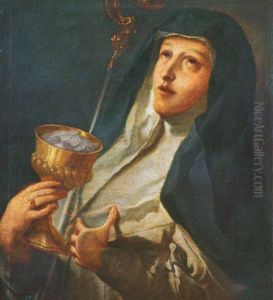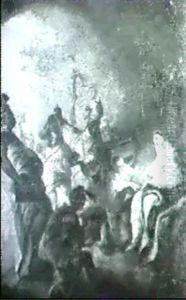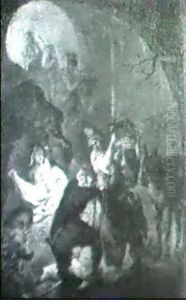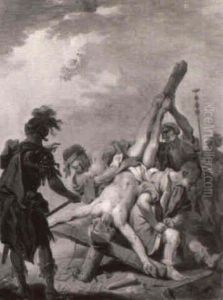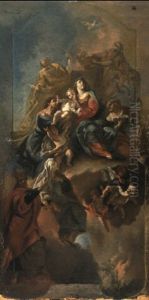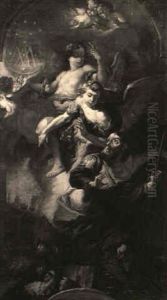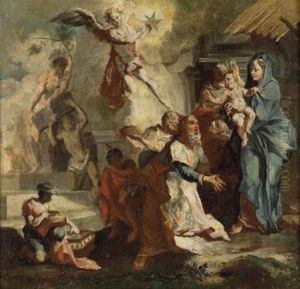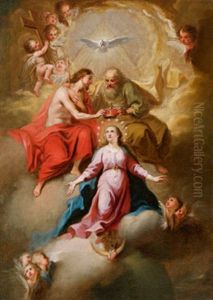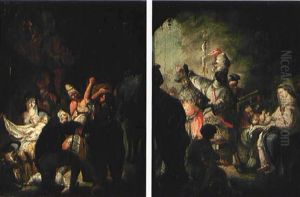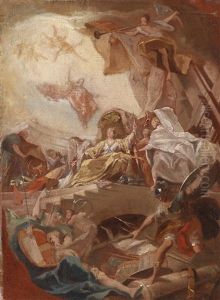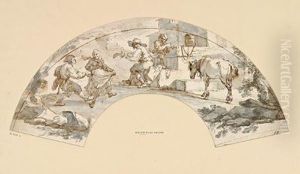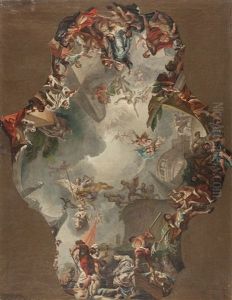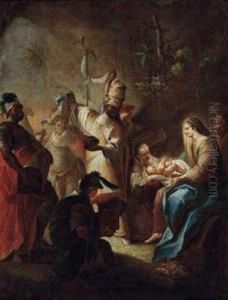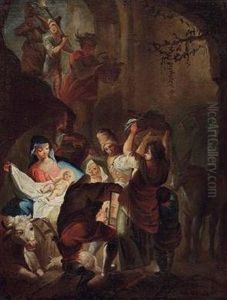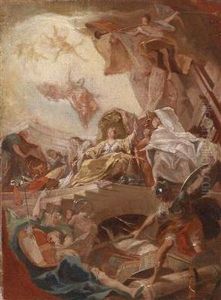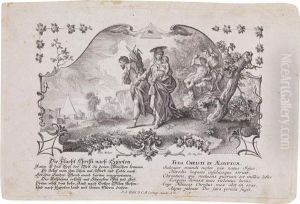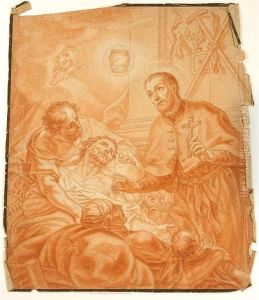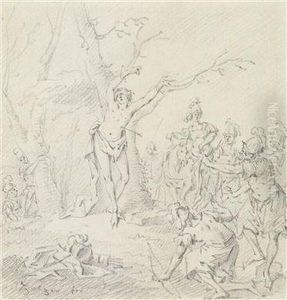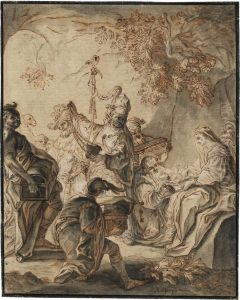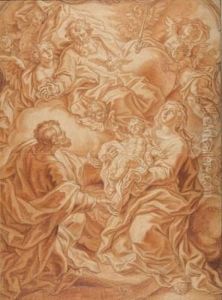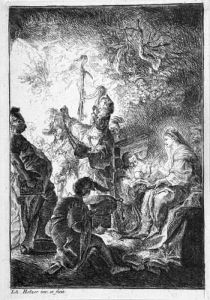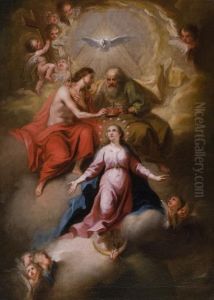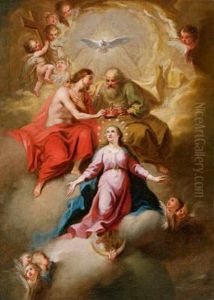Johann Evangelist Holzer Paintings
Johann Evangelist Holzer was an 18th-century German painter, born on December 24, 1709, in Burgeis, Vinschgau. Despite his relatively short life, Holzer's work was influential in the development of the Rococo style of painting in southern Germany and Austria.
Holzer received his initial artistic training from his father, who was a relatively unknown painter. He later studied under the guidance of Johann Jakob Zeiller, a Baroque painter of frescoes. His talent was recognized early on, and he quickly established himself as a masterful draughtsman and painter, particularly of frescoes and altarpieces.
In the 1730s, Holzer's career took him to Augsburg, which was then a thriving artistic center. There, he was exposed to the works of great artists such as Johann Georg Bergmüller and the Italian painters who had a significant influence on his style. Holzer's frescoes are characterized by their dynamic compositions, vibrant color palette, and the use of light to create dramatic effects, which was quite innovative at the time.
Holzer worked on several significant projects, including the decoration of the library and the refectory of the Benedictine abbey in Ottobeuren, as well as the frescoes in the church of St. Anne in Munich. Unfortunately, many of his works were either destroyed or severely damaged over time, which has made it challenging to fully assess his impact on the art world.
Tragically, Johann Evangelist Holzer's life was cut short when he died on July 29, 1740, at the young age of 30. The cause of his death remains unknown. Despite his brief career, Holzer is remembered as a talented artist who contributed to the early stages of the Rococo movement in southern Germany. His style bridged the gap between the Baroque and Rococo periods and influenced subsequent generations of artists in the region.

